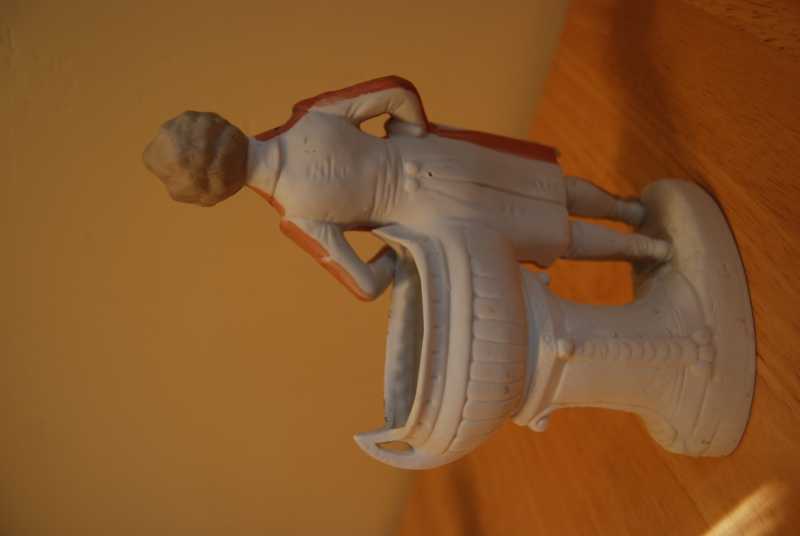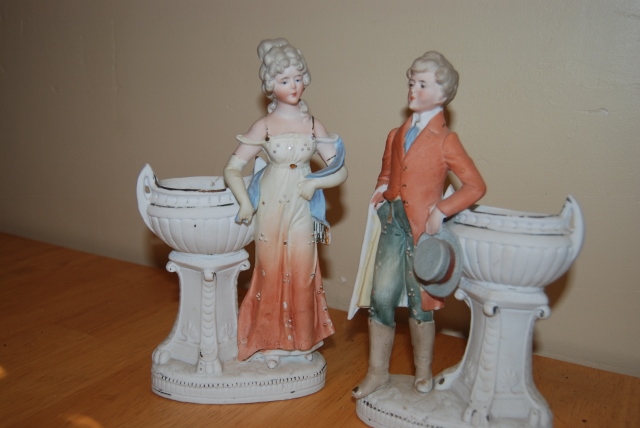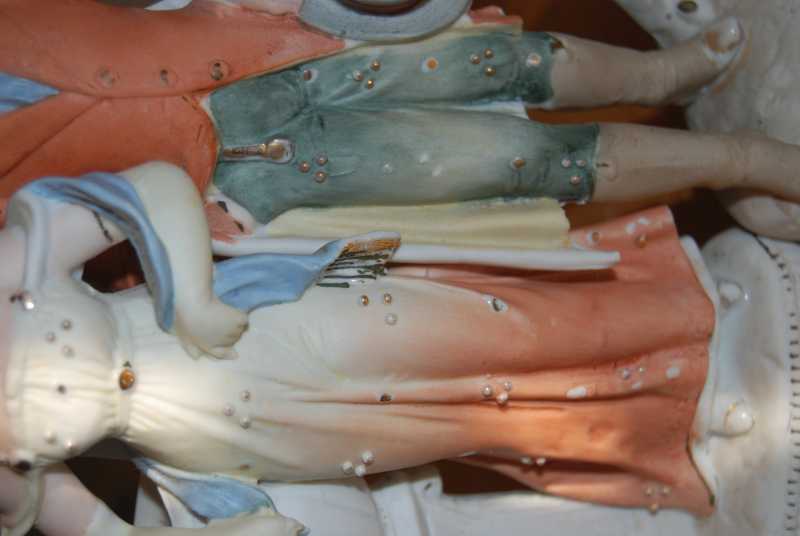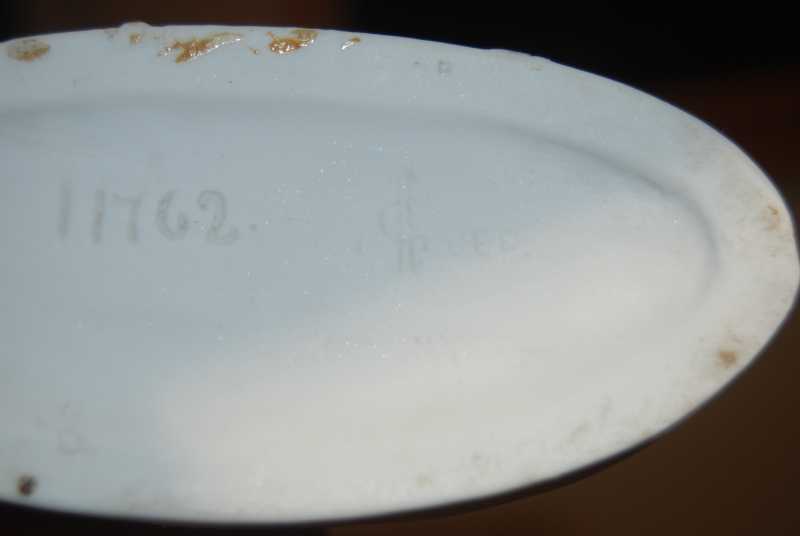I have a pair of figurines , a Boy and Girl in formal attire leaning on large Grecian urns. They are 8 1/2 and 9 inches tall, in new condition. They were my grandparents and were bought in England in the 1950s or earlier.
They have Heubach (G,H) marks, incised, very faint. Only the letters show up, not the rest of the sunburst design. They have the numbers 11762 and DED. The boy is stamped GERMANY.
They have detailed backs, but are not painted in the backs. Only the fronts are painted and they are very detailed with the paint in perfect condition. It seems odd to me that there are only partial marks and the backs are not painted, but they are exquisite. Any information or guesses on them would be appreciated.
Jon
Thank you very much. According to the reference, the C with vertical arrows superimposed with DEP. was used between 1879 and 1886. This is the mark and the ‘Boy” has Germany embossed also.
I can verify that these were purchased in England in the 1950’s or earlier by my grandparents. The reference states that own marks were not re-used by the East Germans until the 1960s when they used existing molds. This assures me that they were made between 1879 and 1886. I realize that this is not proof to you or anyone else who cannot confirm the history without verification by experts, but from the information provided and my knowledge of the purchase date, I know that they have to be originals .
I do appreciate your help and this solves the mystery (for me) since recasts were not on the market when these were purchased. I would need to have an expert verify this if I were to sell them if I wanted to, but that is not in my plans.
Thank you again,
Jon
These items are not [i]Heubach[/i], nor related. They were made by [b]Porzellanfabrik Unger, Schneider & Cie.[/b] from the town of Gräfenthal in Thuringia, see here:
[url]http://www.porcelainmarksandmore.com/germany/thuringia/graefenthal-03/index.php[/url]
The number you see (“11762”) is the item number. Mantelpiece sets were often only decorated on the front side, unlike table centerpieces or other 360 degree placable ornaments. This made them cheaper to produce; some mantelpiece sets don’t have a fully developed rear at all (the back is far less detailed or was left completely flat).
Hold in mind that [b]Porzellanfabrik Unger, Schneider & Cie.[/b] items were later reproduced 1:1 by their legal successor, the East German [i]VEB Porzellanfiguren Gräfenthal[/i], hence only a “hands-on” check by an expert/dealer/collector may tell if it’s an old set or a newer recast.
The things I question are-
Why is only one side painted on each figurine? Why is there no sunburst and only the letters marks, and why so faint? What does the number designate? What does DED. stand for?
It is almost as if these are unfinished, or is being painted on only the fronts common? I have tried to find any others like this and cannot. Could they be unfinished? Why? A prototype?
They are very well done and I find these things puzzling.
I find there is also a Gustav Heubach who was a maker of figurines as well. The number seems to be a mold number consistent with Gebruden Heubach mold numbers.
Help!




